Review for Katsuhito Ishii Collection
Introduction
I never expected Twitter of all things to motivate me, especially this last year, but this week seeing my feed fill with Tweets about Katsuhito Ishii visiting the UK as Third Window Films screen his movies at notable cinemas, finally knocked me out of my comfortable procrastination place, to address the check discs for the Katsuhito Ishii boxset which by the time this review goes live, will probably already have been released. Never put off today, what you can also put off tomorrow. But Third Window Films have been progressively building up to this release, testing the waters with The Taste of Tea before Funky Forest/Warped Forest. Fans are ready and now primed for the full-on Katsuhito Ishii Experience, and this boxset will deliver six features and plenty of extras.
They are spread across 3 Blu-ray discs as follows, and discs 1 and 2 boot to animated menus. Disc 3’s menu screen is static.
Disc 1
Introduction: Shark Skin Man and Peach Hip Girl
Two years previously, Toshiko Momojiri tried to get away from her job and her overbearing uncle, but only got as far as the post office before learning her uncle had cleaned out her savings account. And then, a masked man came in brandishing a gun and robbed the post office. Now she’s trying again...
Kuro Samehada is in the mood to celebrate, but he may be premature. There’s a whole criminal gang after him, led by the ominous looking Mr Tanuki. It’s a little one-sided, being chased down on foot by armed men in a big car, but lucky for him Toshiko is passing by in her jeep and not paying attention to the road. Now both Toshiko and Samehada have something to run from, so they might as well head in the same direction.
The Transfer: Shark Skin Man and Peach Hip Girl
Shark Skin Man and Peach Hip Girl gets a 1.85:1 widescreen 1080p transfer with DTS-HD MA 5.1 Surround Japanese audio with optional English subtitles. It’s a solid presentation, the image is clear and sharp, with good detail and no signs of compression or print damage. Colours are a little subdued, but that might be a reflection of the film stock used. The audio is nice and immersive though, the sound design making full use of the format, with the song choices and music really driving the film. The dialogue is clear, and the subtitles are accurately timed and free of typos.
Conclusion: Shark Skin Man and Peach Hip Girl
I keep wanting to call this Peach Skin Man and Shark Hip Girl... Based on the manga of the same name, Shark Skin Man and Peach Hip Girl is a wacky crime drama comedy that delivers a concentrated burst of zaniness. It takes a page from Reservoir Dogs’ book, by throwing the audience right into the middle of events, and quite rightly realises that this isn’t a film where character back-story or development is all that necessary. You only need the main characters to meet, and start running for the drama to be full throttle, and with antagonists this colourful and idiosyncratic, you don’t need depth of story either.
There is enough story though to hang a film from. Toshiko’s uncle is a serious creep, and has unsavoury designs on her, controlling her life to a ridiculous degree. And when she runs, apparently with a man, he gets his friend Yamada to get her back, and do harm to whatever man she has run off with. Yamada is a ridiculous figure at first glance, even a little childlike but he turns out to be a poison dwarf to whoever riles him.
Then it turns out that Samehada has ripped off the criminal syndicate that he works for, and he’s running with their ill-gotten gains. They want their money back, and to teach Samehada a lesson. There are all sorts of villain among them, each of them so distinctive and well defined that they could conceivably carry a film of their own. For one of the pursuers, Samehada’s former partner, he’s torn between loyalty to the syndicate, and his friendship with Samehada. And of course with Yamada chasing Toshiko, and the Syndicate after Samehada, all moving in the same direction, clashes are inevitable.
The film depends on the chemistry between Samehada and Toshiko, and it’s a film that really does hold the attention in that regard, getting us invested in their relationship as it develops, and rooting for them as they try to escape. If I do have a criticism, it’s that some of the characters leave the story before we truly get to know them, although given that the original manga was just one volume when collected, there may not be a lot of source material to adapt.
8/10
Introduction: Promise of August
Three young women have an ill-acquired map, leading to a particularly therapeutic treasure. M marks the spot for Morita, Mizuno and Mochizuki, although it’s a map that leads to the middle of nowhere in the countryside, and the three city girls are out of their depth. It turns out that it’s a long way to walk, so they wind up hitchhiking, and get a ride from a timid passing driver named Okai.
The Transfer: Promise of August
Promise of August gets a 4:3 pillarboxed 1080p transfer, with DTS-HD MA 2.0 Japanese with optional English subtitles. It’s an excellent transfer, clear and sharp, with good detail, properly filmic, and with rich and consistent colours. The audio is fine, the dialogue clear, and the music appropriately quirky. The subtitles are accurately timed and are free of typos.
Conclusion: Promise of August
Promise of August was made three years before Katsuhito Ishii’s debut feature, Shark Skin Man and Peach Hip Girl. I don’t know if that makes Promise of August his first actual film, but if it is, it is a very accomplished piece of work, a deft bit of storytelling with the kind of vivid and idiosyncratic characters that so appealed to me in Shark Skin Man... A short comedy film, it has enough space to introduce and develop its characters, but overall it plays like a set-up to a punch-line.
You have three main characters, the most obvious is the kooky and extrovert Mochizuki, always in motion, and capturing life with her film camera. Morita is the ostensible leader, level-headed if wry, while Mizuno is the sympathetic member of the trio. They’re in the countryside following a map to hidden leafy treasure. It turns into a quirky quest when they start at a train platform with nothing else to it (a bit like the train stop from Trainspotting, but sunnier). A quick stop off at a weird restaurant precedes them trying to follow the map on foot, before they realise it’s too far, and they have to hitchhike. The first person who stops is Okai, timid and indecisive, and it isn’t long before the girls rope him into their quest.
Promise of August is entertaining, and I enjoy the characters. Most importantly, it sticks the landing, which given its singular focus is essential. Having said all of that, the narrative is thinner than it needs to be, even in a short film like this, and at times it does feel like it’s stretching its premise. Still, given that it is effectively presented here as an extra feature, bonus to Shark Skin Man and Peach Hip Girl, it doesn’t demand the criticism.
7/10
Extras: Disc 1
Director Katsuhito Ishii Interview (49:39)
The World of Katsuhito Ishii – Video Essay (10:29)
Director Katsuhito Ishii Audio Commentary (on Shark Skin Man and Peach Hip Girl)
Promise of August Short Film (this is listed in the extras on this disc, but I’ve reviewed it above)
Disc 2
Introduction: Party 7
Okita is a peeper, who is released from his sentence just in time to see his father on his death bed. It turns out peeping is genetic, as his father built a hotel, with a secret peeping room behind one of the guest rooms. When Okita finds it, he also gets a thin skinned mentor in Captain Banana, to introduce a whole new world of peeping. And there’s a lot to peep in this particular room.
Miki is a small-time criminal who has just ripped his boss off to the tune of 200 million yen. And he’s just picked this room in Hotel New Mexico to hide out in. It’s a poor choice, as his ex, Kana quickly finds him, looking for him to repay the money he owes her. She needs it for her upcoming wedding, although Miki’s initial instincts are more opportunistic. Not that he has the chance, as hot on Kana’s heels is her concerned fiancé, Todohira. And then Miki’s aniki Sonoda shows up, ordered by their boss to get the money back with terminal force. But Sonoda’s not exactly trusted, and once they sort out their differences, the four guests are tempted by that 200 million; which is when Wakagashi, who is trusted by their boss, enters the room. This should be ample entertainment for the peepers Okita and Captain Banana, but they have their own issues to resolve.
The Transfer: Party 7
Another excellent transfer here, Party 7 gets a 1.85:1 widescreen 1080p presentation, with DTS-HD MA 5.1 Surround Japanese audio and English subtitles. The image is clear and sharp, detail levels are excellent, given the limited number of sets and few locations, and the subdued colours and darker scenes. The audio is fine, clear and crisp, making the most of the eclectic music soundtrack, while keeping the dialogue clear, the soundstage suitably immersive and ambient. The subtitles are accurately timed and are free of typos. The animated opening sequence is very striking, thanks apparently to some serious anime talent, and a useful reminder that Katsuhito Ishii wrote the superlative Redline.
Conclusion: Party 7
Party 7 might just be the best part of this collection, and it’s not just the bias for the fantastic anime opening sequence. It’s a perfect example of a simple concept, brilliantly executed. Other than a few flashbacks and asides, this is a story that takes place in just one location, one room (and the peepers’ haven attached to it). It introduces and develops seven fantastic and vivid characters over the space of a couple of hours, and it’s delightfully daft, silly, and hilarious. It’s got the kind of zany energy that I have seen in films like Survive Style 5+, but as mentioned, all focused down into the one room.
The film begins with an introduction to the New Mexico Hotel, the dingiest place you can imagine, with a couple of employees having a “Godot” conversation about excrement falling from the skies, and rowing about which word they hate most, “actually” or “really”. Into this hotel come a group of people with secrets and lies, all winding up in the pressure cooker of the least attractive hotel room ever seen on screen. Miki’s just ripped off his yakuza boss, and is looking for a place to lie low before moving on. Kana is his ex girlfriend who wants the money he owes her, because she’s getting married. That instantly invokes some jealousy in Miki, and he tries aggressively flirting with her, with the thought that a suitcase full of cash outweighs any rich fiancé.
Todohira is that fiancé, a quirky little geek of a guy who clashes with Miki at first glance, in love with Kana, but has yet to tell her everything about himself. And then Sonoda shows up, a childhood friend of Kana and Miki, but torn between that friendship and his yakuza loyalties. He’s been sent to retrieve the money, and deal with Miki with finality, and to assure his loyalty, the boss has given him some expensive looking gifts.
While this drama plays out, behind a false painting, another relationship drama unfolds, with Okita discovering the peeping paradise his father constructed, and learning about it from a superhero of a mentor in Captain Banana. He’s been in and out of reformatory for peeping and lewd behaviour, and had to deal with his father’s shame for that. But on his death bed, his father told him about this hotel and the peeping room. And it turns out that Captain Banana was his father’s friend, and together they spied on the guests that visited the hotel. And now Captain Banana introduces Okita to a whole new level of peeping.
Party 7 is rich with character comedy and zany, off the wall humour. I enjoyed every minute of it, so much so that I watched it twice in two days. That rarely happens. Given the extra features that come with it, it’s understandable it gets a disc to itself in this three disc collection, but it is very much worth watching.
9/10
Extras: Disc 2
Making Of (20:41)
Director Katsuhito Ishii Interview (16:47)
Alternate Ending (2:31)
Arne Venema & Mike Leeder Commentary
Storyboards (62:31)
Trailer (2:05)
Teaser (1:00)
Disc 3
Introduction: Hello Junichi
9-year-old Junichi is a wimp. He lacks confidence, is first to be picked on, and even in the gang of friends he hangs with, he’s the dogsbody. He can’t even work up the courage to give back the eraser to Maeda, the girl he borrowed it from weeks before, and also the girl he has a crush on. But when their class gets a new student teacher, Miss Anna, his life begins to change.
The Transfer: Hello Junichi
Hello Junichi gets a 1.78:1 transfer with a DTS-HD MA 5.1 Surround Japanese audio track and optional English subtitles. The image is clear and sharp, colours are rich and consistent, and detail levels are good. The audio is adequate, a little low in volume compared to the average disc, but still easy to rectify. The subtitles are timed accurately and are free of typos. In general, the look and sound of the film, and the open matte ratio suggests a made for TV movie, but that’s just my impression. The film is no less enjoyable for all that.
Conclusion: Hello Junichi
Hello Junichi is a family movie, targeted at children, and it has a predominantly young cast, following the lives of six elementary school students at a formative moment in their lives. The first thing you have to do is to reset your expectations when it comes to acting performances. In some cases, it’s the first time these actors have been in front of a camera and it does tell. But if you temper your expectations, you’ll find Hello Junichi to be as entertaining and as enjoyable as any other film in this collection.
Junichi is the timid guy in class who everyone picks on, including his friends. Nakayama is the confident leader of their gang, while Kuramoto is effectively number two. He’s got the kind of teasing love-hate relationship with tomboy Tanaka that usually means something more. Tanaka is a brusque girl, but has dreams of being an idol. Machida is a child actor who has an atypical confidence with girls, while Ida is the typical boffin genius who rounds off these childhood gangs. It’s not just Junichi; they all have issues with aspirations and setbacks to deal with.
Junichi’s life begins to change when they get a new student teacher for a month in Miss Anna, although at first she seems like just another bully to him. She’s all sweetness and enthusiasm in front of the other teachers, but alone with the kids, her true colours come out, hoping to breeze through the next month, doing as little as possible, to just get her course credit. Things change when her car is vandalised, and when she accuses someone in the class, the gang make it a mission to find out who is responsible, and in the process, Junichi starts chipping away at the wall of timidity around his character.
Thereafter, Anna starts taking more of an interest in the children’s lives, and the gang members lives in particular. Just like Junichi, the kids have to deal with the problems they face, whether it’s from obnoxious adults, a trio of particularly bothersome high-school age bullies, issues with family, or first love, which given they are just nine-years-old, might feel a little precocious. These little vignettes play out in entertaining ways, but the film builds to a more inclusive climax centring on Kuramoto’s mother’s birthday present.
Hello Junichi is a kids’ movie, but it’s also a reminder that standards for kids’ entertainment vary from territory to territory. There are themes, drama, even moments of implied jeopardy that wouldn’t be allowed to play for a similar target audience in the UK. It’s why whenever I’ve seen Kikujiro broadcast on television in the UK, it’s late at night, far out of the reach of the audiences that could appreciate it most. Hello Junichi is of a similar vein. Regardless of that, I really did enjoy this film.
8/10
Introduction: Sorasoi
‘Sorasoi’ is the name of a seaside hostel that is so far off the beaten track, that it doesn’t even have a phone. But there are still people who want to stay there, like a young woman named Yuri who has reason to disappear for a while. But there is already someone there, the Potente dance troupe, a university dance club taking part in a summer camp, training, rehearsing, and preparing for competition. But there is less talent in this troupe than there are interpersonal drama and comedy calamities.
The Transfer: Sorasoi
Sorasoi gets a 1.78:1 widescreen 1080p transfer with a DTS-HD MA 2.0 Stereo Japanese audio track. Unfortunately this time, the English subtitles are burnt into the print. Dating from 2008, this looks to be a digitally shot film, and you have to keep in mind the rapid evolution of that technology. You can definitely see the digital in the image, blown whites and crushed blacks, a bit of softness, and contrast not too great. But generally the image is clear and sharp, and given that most of the scenes are set in the daytime, detail and colours are still strong. The audio is fine, but given that most of the dialogue seems to have been captured on location, the subtitles would have been essential even if this were an English language film.
Conclusion: Sorasoi
Sorasoi is probably the film in this collection that is hardest to get into. It is a comedy filmed in a documentary style, almost making the viewer feel like a fly on the wall, so it takes a while to figure out the characters and the relationships, more so than if it were a straight up narrative. But it is worth putting the effort in, as the film certainly delivers by its conclusion. Sorasoi is a gentle, mellow comedy, albeit with vivid characters. Its setting gives it a small-town vibe, and the quirkiness of the community, where everyone seems to get into everyone’s business, strongly reminded me of Local Hero.
The story is completely different though, with a focus on the dysfunctional dance troupe, who have their summer camp at the Sorasoi hostel. An injured former ballet dancer named Tabe is subbing for the club supervisor, determined to get the team to the level where they will win the next competition. But the troupe is pulling in all directions, and most of the students are more focused on having fun, or their interpersonal relationships than actually improving as dancers.
Into this drama comes Yuri, a woman who is inexplicably looking for a place to stay that is off the grid. She makes a connection with one of the students, a boy named Ryu, and it’s a connection that changes his outlook. That altered outlook begins to spread through the group. But there are secrets and revelations to be had, not least why Yuri is trying to stay under the radar to begin with.
The summer camp is a staple plot arc of many high school anime and manga, so much so that I was briefly googling just what manga Sorasoi was adapted from. It’s understandable given that director Katsuhito Ishii has that anime background. But this seems to be an original story, albeit one that will hit all the right notes for any anime fan. I do wish that Third Window could have sourced a transfer without the burnt in subtitles, although sometimes that’s unavoidable when you’re hitting the size restriction on a disc. Sorasoi is definitely worth watching however you can though.
8/10
Introduction: Norioka Workshop
Tatsuo Norioka is an actor who has decided to pay it forward, and hold an acting workshop, to pass on what he has learned. And when two cute girls, Nami and Mari show up to his first class, he’s quick to decide that is as big a class as he can manage. But there is more to Nami and Mari than meets the eye. Actually there’s more to Norioka than meets the eye, and these secrets are about to collide.
The Transfer: Norioka Workshop
Norioka Workshop gets a 1.78:1 widescreen 1080p transfer with DTS-HD MA 2.0 Stereo Japanese, and optional English subtitles. There are no issues with the image, clear and sharp with strong colours and good detail. The audio is fine, the dialogue is clear, and the subtitles are accurately timed and free of typos. The short film gets a mellow soundtrack that complements the comedy.
Conclusion: Norioka Workshop
The collection ends with this short film, and whereas many short films feel like build-ups to a single punch-line, Norioka Workshop uses its 30 minutes to develop its characters a little more, and have some fun with its premise before hitting us with its revelations.
With all professions, there are people who can take it too seriously, or make a meal of the more mundane aspects to inflate their own egos. But there is something about pretentious actors that simply lends itself to comedy. With Norioka having ulterior motives to his workshop, while the two girls attending have their own agendas, there is much to make mock of here. That’s before they get to the seminar on screen fighting.
Norioka Workshop is a whimsical bit of comedy, and a delightful note to close out the boxset on. It does suffer from what ails many good short films, in that you’d wish it had more time to really explore its premise and characters, but that is still preferable to a short film that is unfulfilling and tedious.
7/10
In Summary
I wasn’t expecting this, but the Katsuhito Ishii collection offers six very different, but all entertaining movies. Some are more enjoyable than others, but this is the first time I’ve watched an anthology collection like this, and there isn’t a film that I wouldn’t rush to watch again. Every film is a little gem, and well worth the expenditure of your time. Third Window Films have also put together a delectable collection of extra features to go with the films, and you’ll get many hours of enjoyment from this boxset.
The Katsuhito Ishii Boxset is available from TWF’s distributor Arrow Video, from Terracotta, and from mainstream retailers.



































































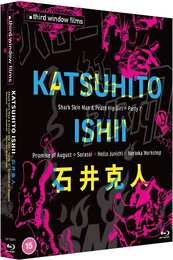
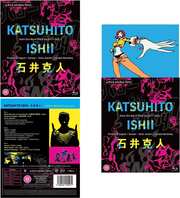

































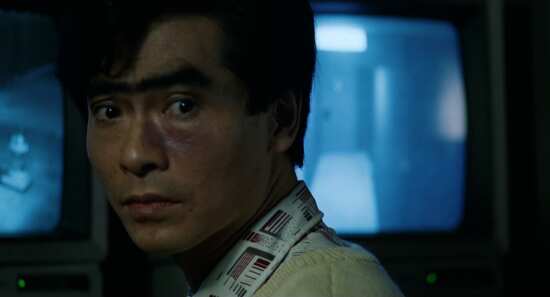

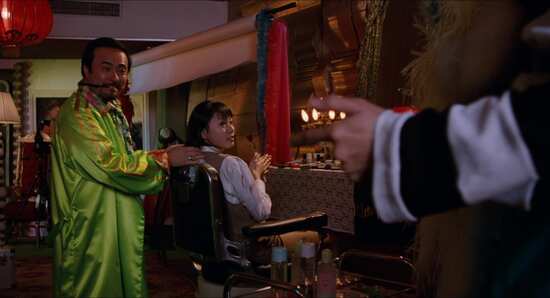
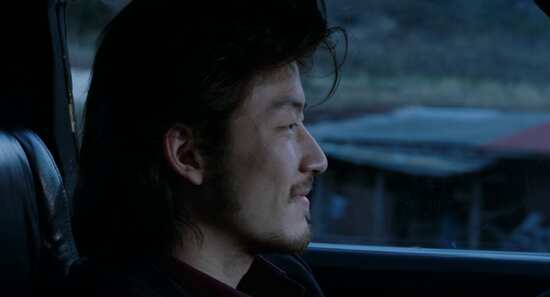


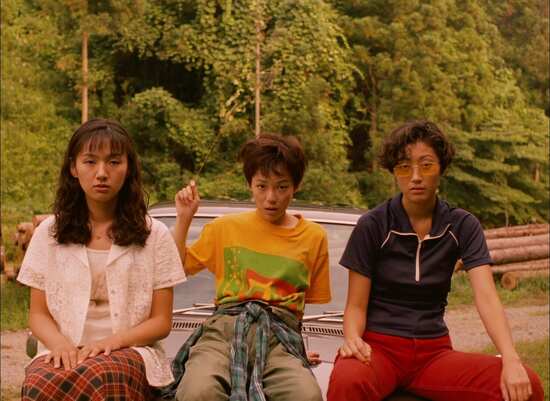
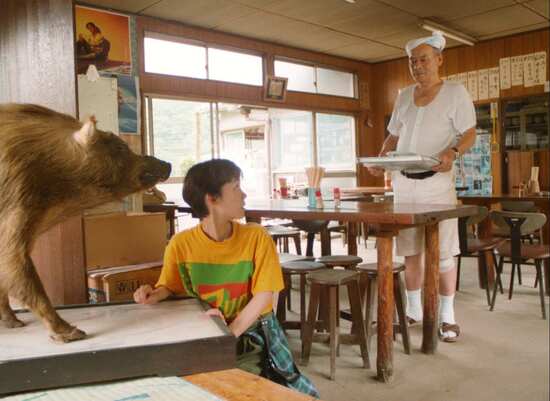




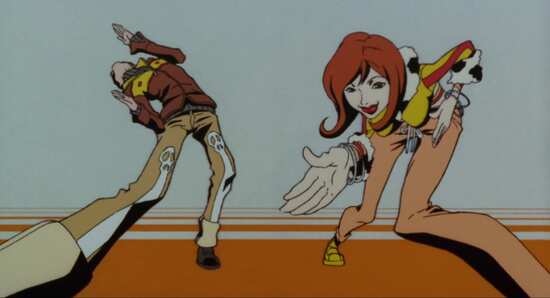

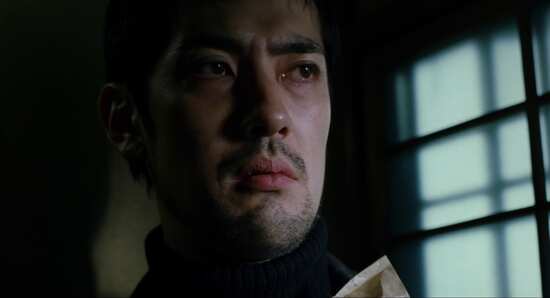
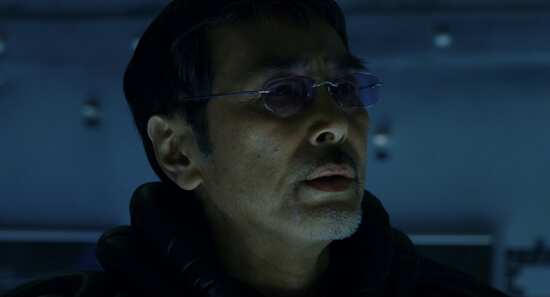
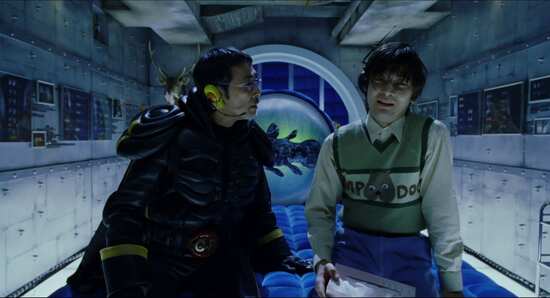

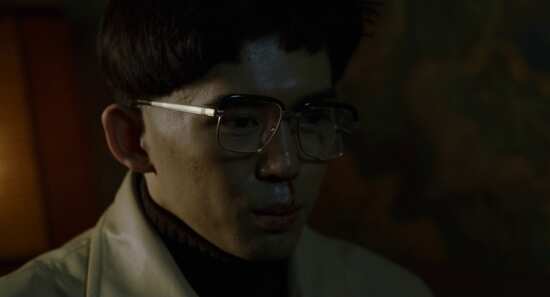
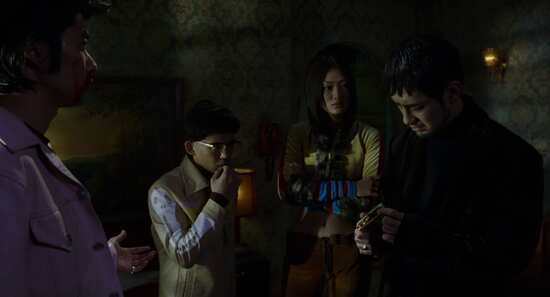
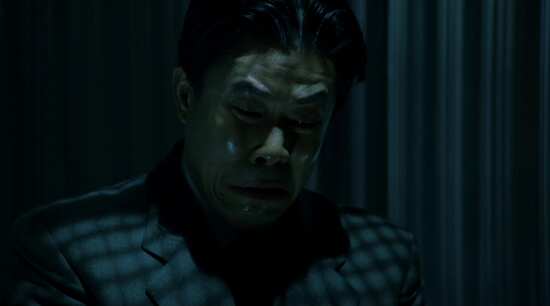
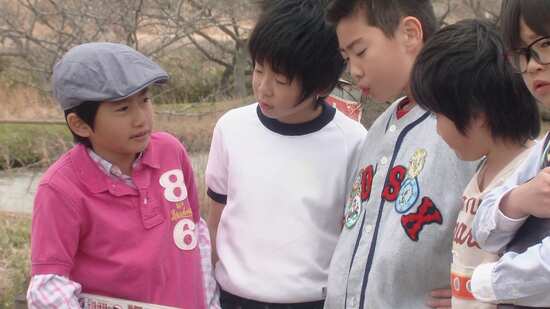



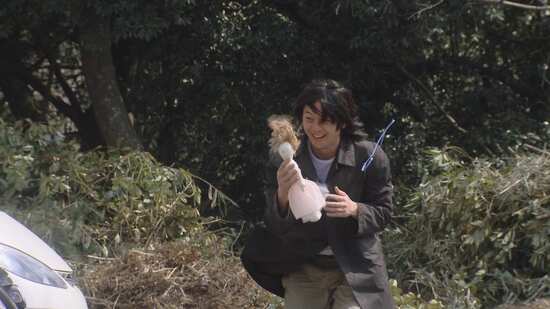














Your Opinions and Comments
Be the first to post a comment!